In producing a pure spectrum, the incident light is passed through a narrow slit placed in the focal plane of an chromatic lens because a narrow slit
1.a produces less diffraction
2.increases intensity
3.allows onlyone colour at a time
4.allows more parallel beam when it passes thorugh the lens
The correct Answer is:D
To solve the question regarding why a narrow slit is used in producing a pure spectrum when light is passed through a chromatic lens, we can break down the explanation into clear steps:
1. Understanding the Role of the Slit:
- A narrow slit is essential in optical experiments involving light dispersion. It serves as a point source of light, which helps in producing a clear and distinct spectrum.
2. Effect of Slit Width:
- If the slit is wide, it allows a larger area of light to pass through. This results in multiple rays of light coming from different parts of the slit. Each part of the slit can emit light of different wavelengths (colors), leading to overlapping of these rays.
3. Formation of Impure Spectrum:
- When light from a wide slit overlaps, it combines at the screen, causing the formation of an impure spectrum. This is because different wavelengths interfere with each other, creating a mixture of colors rather than a clear separation.
4. Narrow Slit Characteristics:
- A narrow slit, on the other hand, restricts the light to a very small area. This means that the light passing through is more uniform and primarily consists of parallel rays.
5. Resulting Pure Spectrum:
- When these parallel rays pass through a chromatic lens, they are refracted uniformly. This uniform refraction allows for the separation of different wavelengths without overlap, resulting in a pure spectrum on the screen.
6. Conclusion:
- Therefore, the reason a narrow slit is used in producing a pure spectrum is that it allows only parallel beams of light to pass through, which helps in achieving a clear separation of colors when the light is refracted by the lens.
Final Answer:
The narrow slit is used because it allows only parallel beams of light to pass through, which results in a pure spectrum when the light is refracted by the chromatic lens.
---
- A narrow slit is essential in optical experiments involving light dispersion. It serves as a point source of light, which helps in producing a clear and distinct spectrum.
- If the slit is wide, it allows a larger area of light to pass through. This results in multiple rays of light coming from different parts of the slit. Each part of the slit can emit light of different wavelengths (colors), leading to overlapping of these rays.
- When light from a wide slit overlaps, it combines at the screen, causing the formation of an impure spectrum. This is because different wavelengths interfere with each other, creating a mixture of colors rather than a clear separation.
- A narrow slit, on the other hand, restricts the light to a very small area. This means that the light passing through is more uniform and primarily consists of parallel rays.
- When these parallel rays pass through a chromatic lens, they are refracted uniformly. This uniform refraction allows for the separation of different wavelengths without overlap, resulting in a pure spectrum on the screen.
- Therefore, the reason a narrow slit is used in producing a pure spectrum is that it allows only parallel beams of light to pass through, which helps in achieving a clear separation of colors when the light is refracted by the lens.
The narrow slit is used because it allows only parallel beams of light to pass through, which results in a pure spectrum when the light is refracted by the chromatic lens.
Topper's Solved these Questions
- DISPERSION AND SPECTRABOOK - HC VERMA ENGLISHCHAPTER - DISPERSION AND SPECTRAEXERCISE - Exercises
11 Videos
- DISPERSION AND SPECTRABOOK - HC VERMA ENGLISHCHAPTER - DISPERSION AND SPECTRAEXERCISE - Question for short Answer
6 Videos
- DISPERSION AND SPECTRABOOK - HC VERMA ENGLISHCHAPTER - DISPERSION AND SPECTRAEXERCISE - Objective -1
5 Videos
- CAPACITORSBOOK - HC VERMA ENGLISHCHAPTER - CAPACITORSEXERCISE - short answer
7 Videos
- ELECTRIC CURRENT IN CONDUCTORSBOOK - HC VERMA ENGLISHCHAPTER - ELECTRIC CURRENT IN CONDUCTORSEXERCISE - questions for short answer
17 Videos
Similar Questions
Young's double-slit experiment setup with ligth of wavelength λ=6000Å, distance between two slit in 2 mm and distance between the plane of slits and the screen. Is 2 m. The slits are of equal intensity. When a sheet of glass of refractive index 1.5 (which permtis only a fraction η of the incident light to pass through) and thickness 8000Å is placed in front of the lower slit, it is observed that the intensity at a point P, 0.15 mm above the central maxima, does not change.
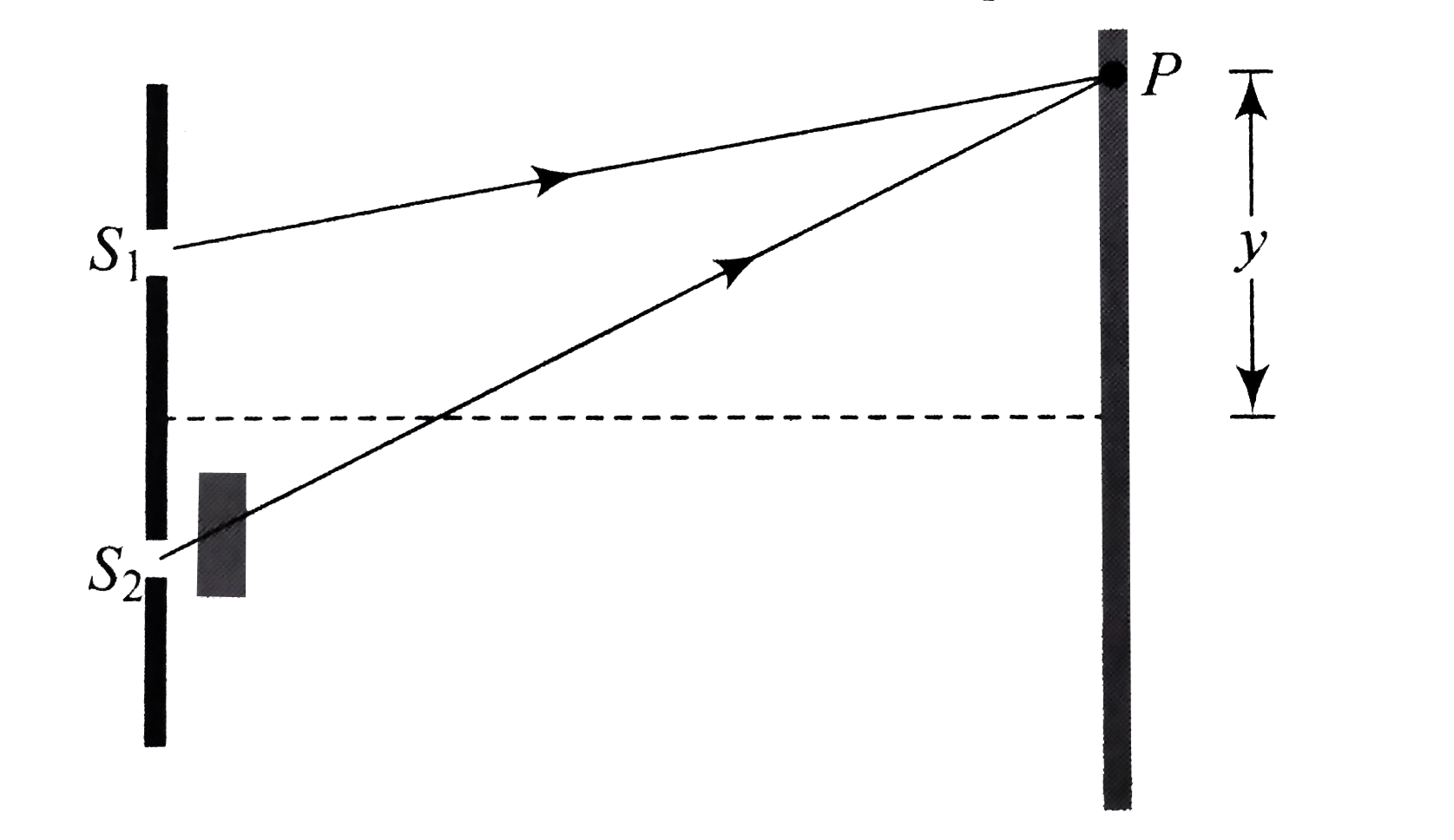
Intensity at point P is
View SolutionYoung's double-slit experiment setup with ligth of wavelength λ=6000Å, distance between two slit in 2 mm and distance between the plane of slits and the screen. Is 2 m. The slits are of equal intensity. When a sheet of glass of refractive index 1.5 (which permtis only a fraction η of the incident light to pass through) and thickness 8000Å is placed in front of the lower slit, it is observed that the intensity at a point P, 0.15 mm above the central maxima, does not change.
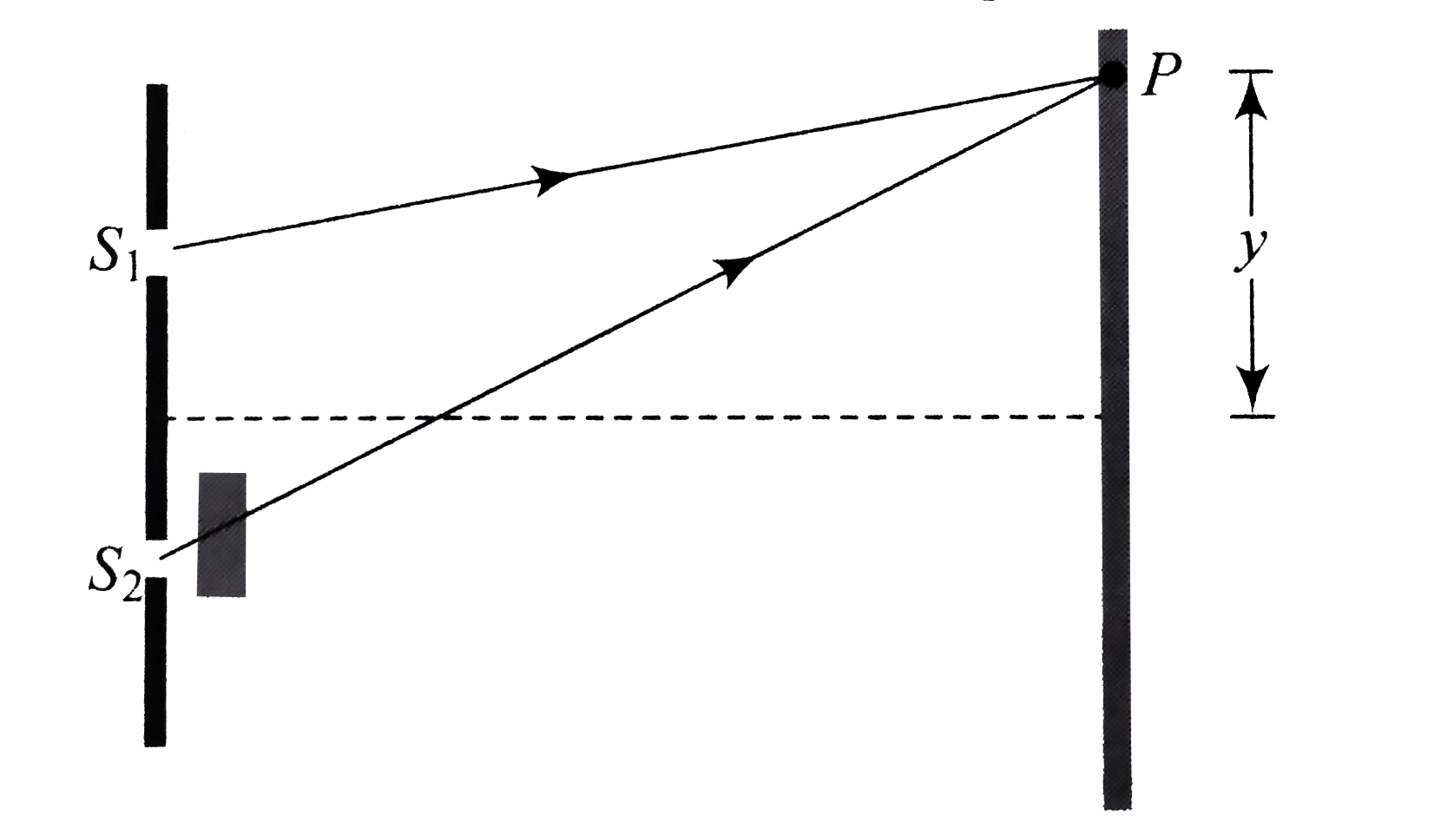
The value of η is
View SolutionYoung's double-slit experiment setup with ligth of wavelength λ=6000Å, distance between two slit in 2 mm and distance between the plane of slits and the screen. Is 2 m. The slits are of equal intensity. When a sheet of glass of refractive index 1.5 (which permtis only a fraction η of the incident light to pass through) and thickness 8000Å is placed in front of the lower slit, it is observed that the intensity at a point P, 0.15 mm above the central maxima, does not change.
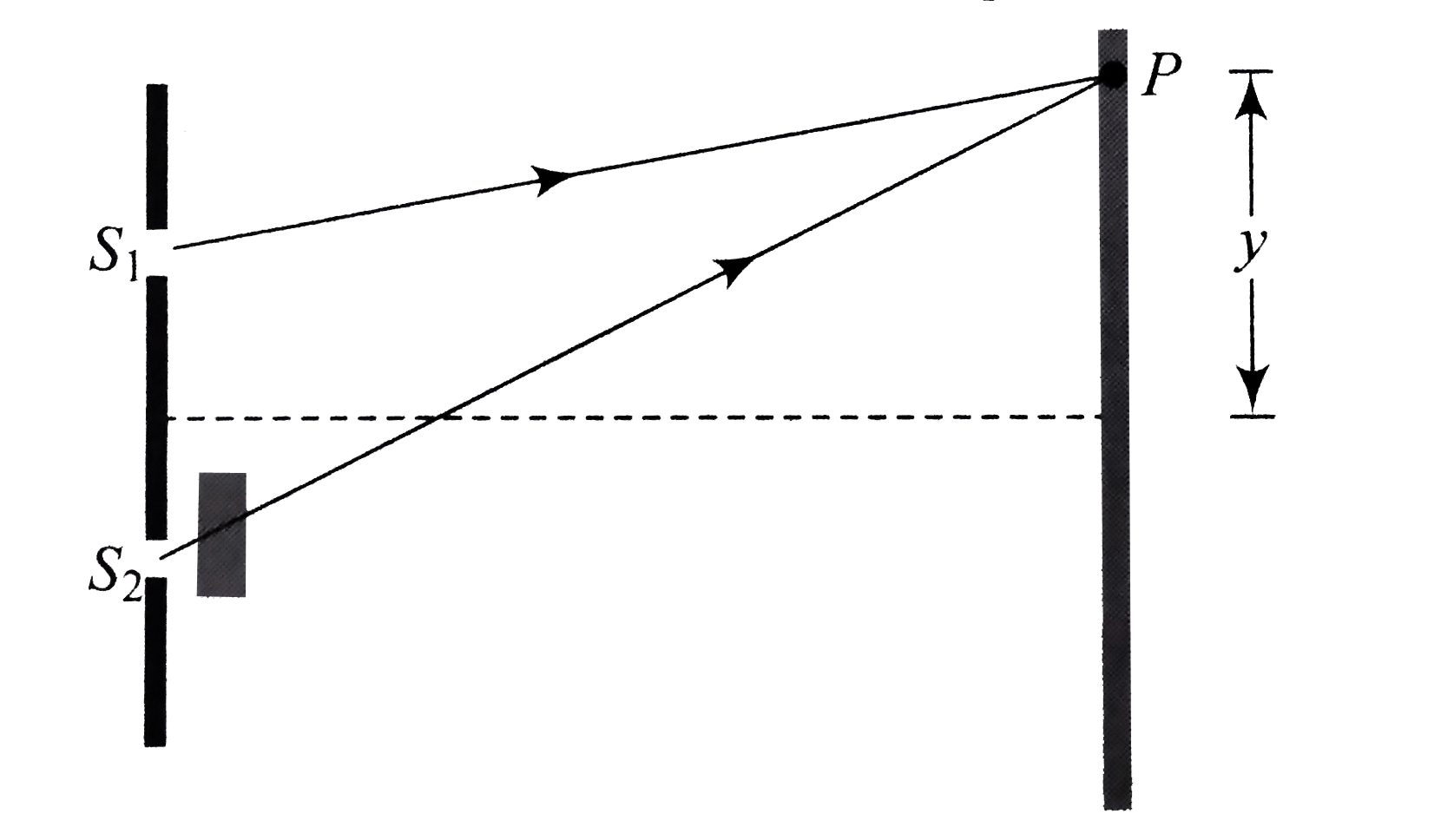
The phase difference at point P without inserting the slab is
View SolutionA lens of focal length f is cut along the diameter into two identical halevs. In this process, a layer of the lens t in thickness is lost, then the halves are put together to form a composite lens. In between the focal plane and the composite lens, a narrow slit is placed near the focal plane. The slit is emitting monochromatic λ. Behind the lens, a screen is located at a distance L front it.
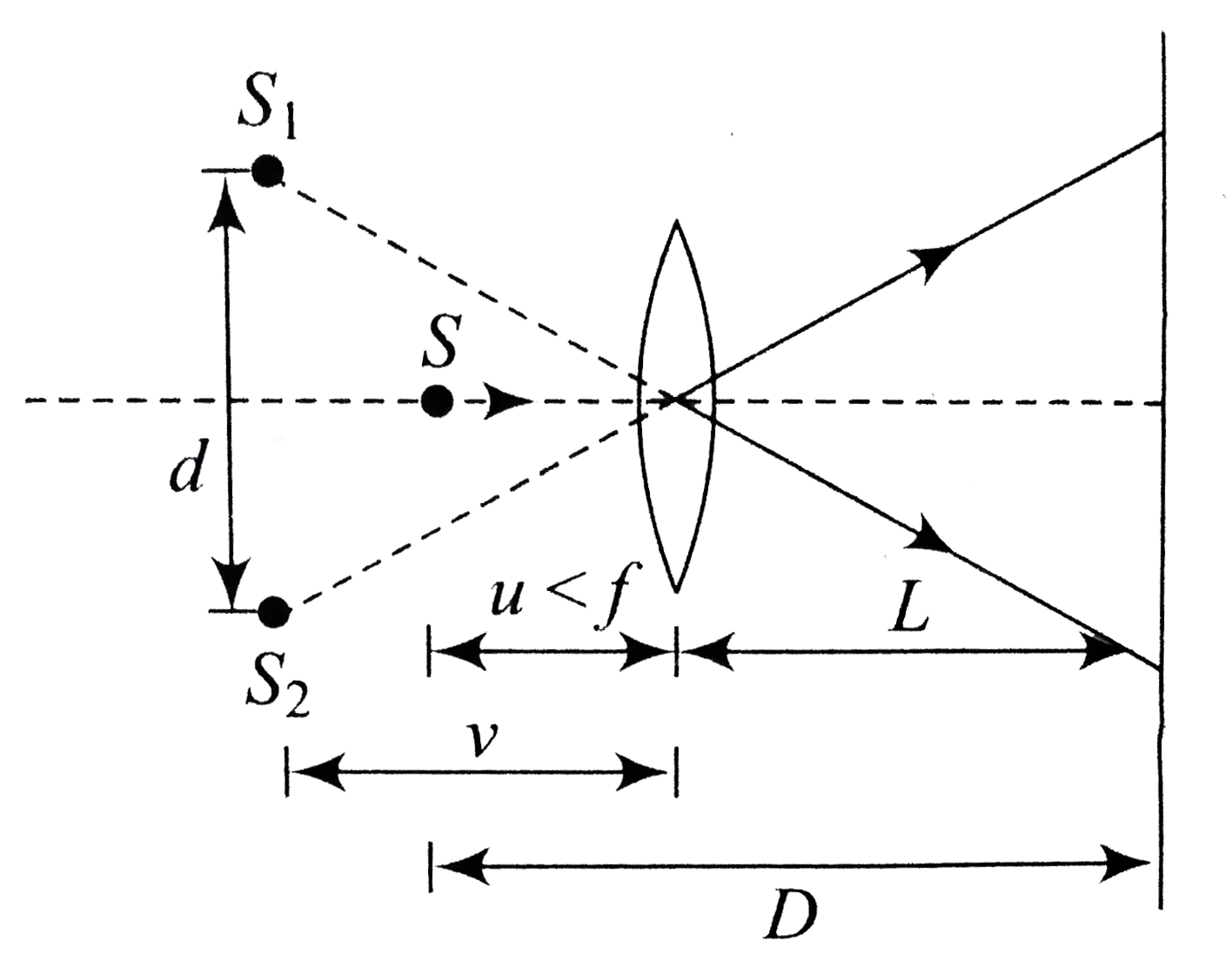
The expression for the number of visible maxima which are obtained through above said arrangement will turn out to be
View SolutionA lens of focal length f is cut along the diameter into two identical halevs. In this process, a layer of the lens t in thickness is lost, then the halves are put together to form a composite lens. In between the focal plane and the composite lens, a narrow slit is placed near the focal plane. The slit is emitting monochromatic λ. Behind the lens, a screen is located at a distance L front it.
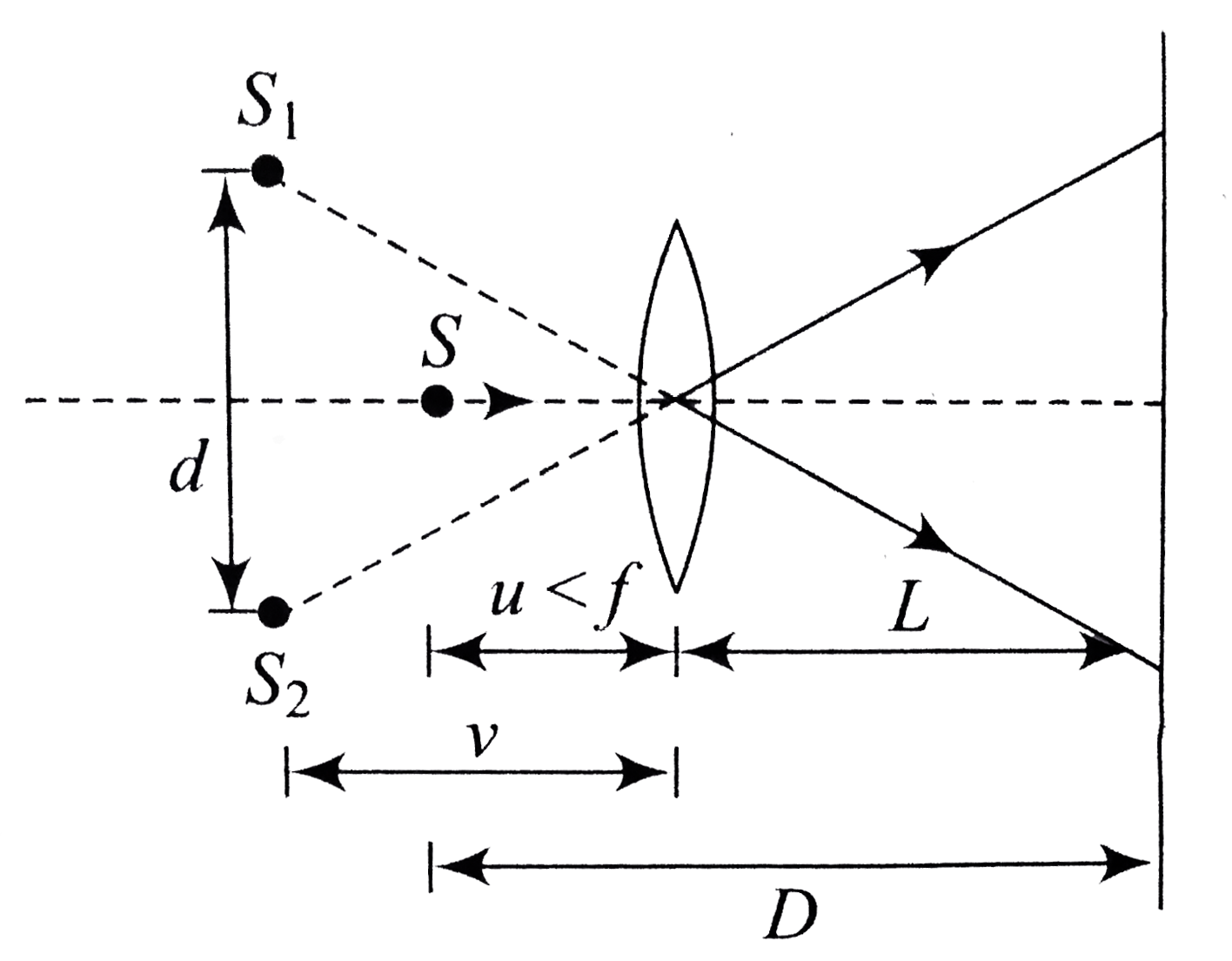
Find the fringe width for the pattern obtained under given arrangement on the screen.
View SolutionIn Fizeau method of measuring the speed of light, the toothed wheel is placed in the focal plane of a converging lens. How would the experiment be affected if the wheel is slightly away from the focal plane ?
View SolutionIn an experiment, electrons are made to pass through a narrow slit of width d comparable to their de Broglie wavelength. They are detected on a screen at a distance D from the slit (see figure).<br>
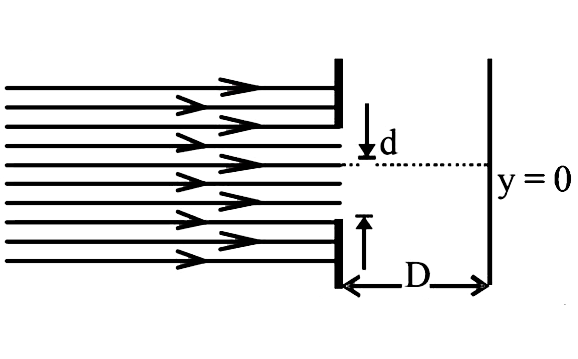
Which of the following graphs can be expected to represent the number of electrons N detected as a function of the detector position y (y=0 corresponds to the middle of the slit ).
View SolutionIn an experiment, electrons are made to pass through a narrow slit of width d comparable to their de Broglie wavelength. They are detected on a screen at a distance D from the slit (see figure).<br>

Which of the following graphs can be expected to represent the number of electrons N detected as a function of the detector position y (y=0 corresponds to the middle of the slit ).
View SolutionIn young's double slit experiment with monochromic light, fringes are obtained on a screen placed at some distance from the plane of slits. If the screen is moved by 5 cm towards the slits, then the change in fringe width is 30μm if the distance between the slits is 1mm, then calculate wavelength of the light used.
View SolutionCoherent light with wavelength 600nm passes through two very narrow slits and the interference pattern is observed on a screen 3.00 m from the slits. The first order bright fringe is at 4.94 mm from the centre of the central bright fringe. For what wavelength of light will the first order dark fringe be observed at this same point on the screen?
View Solution
